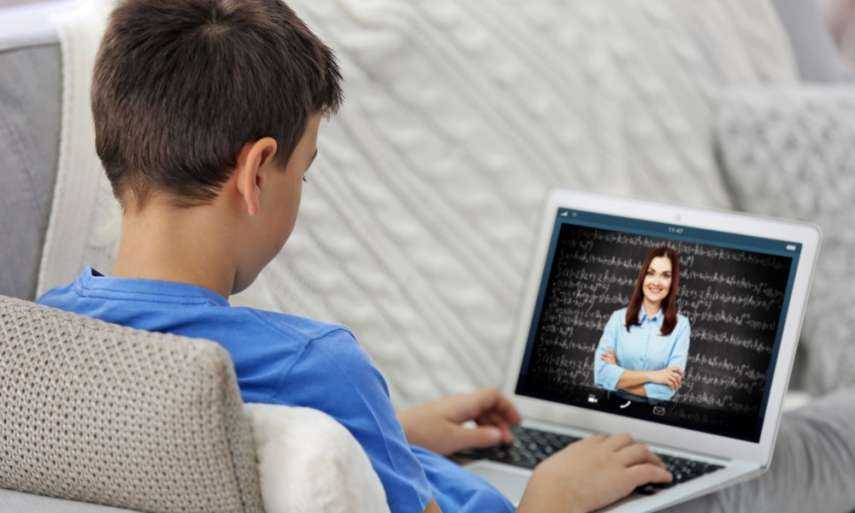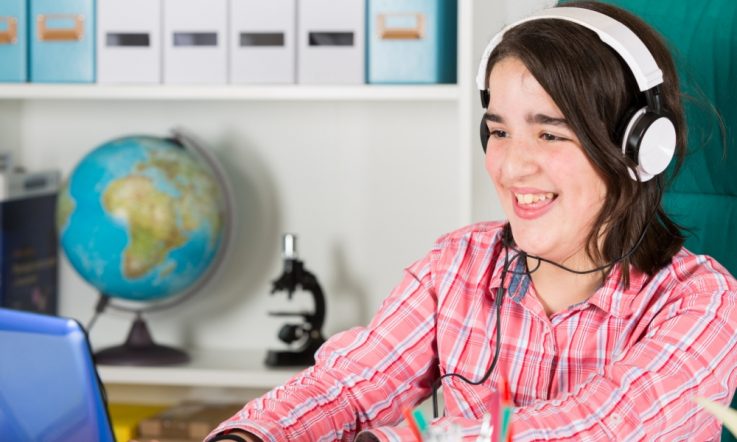Hello and welcome to Episode 2 of Teacher magazine's podcast series on Teaching Methods, I'm Jo Earp.
Today we focus on Flipped Learning. I'm talking with Andrew Douch - an Australian educator who has spent the last 23 years teaching in Victoria and overseas. He first 'flipped' his classroom back in 2006. Now he speaks at conferences and works with teachers in schools, leading professional development around ideas such as the Flipped Learning Classroom, Blended Learning and the effective use of ICT tools.
I started by asking Andrew to explain what we mean by Flipped Learning, or the Flipped Classroom.
Andrew Douch: I guess it gets a lot of different interpretations, or people think of it in different ways. The traditional sort of mainstream idea of Flipped Learning is that teachers will take what they used to do in the classroom - you know, lecturing and presenting information to students and classroom discussions for example, and do those things outside the classroom. Perhaps they might present content via YouTube and videos and podcasts, and set up a discussion board where students can ask their questions outside of the classroom. And in doing that, they free up class time to do the homework that would have been sent home, and now of course if students get stuck with the homework the teacher is there to help them, their friends are there to help them. And the 'homework' doesn't necessarily need to be individual homework, it can be group homework because now you've got students who are all there together so they can work on something collaboratively.
That's probably the traditional view of Flipped Learning, I guess. ... But I prefer to think of it as simply that we now have choices that our teachers didn't have, and the idea to me of the Flipped Classroom is that by automating the things that are able to be automated, we free up time for the things that can't be automated and those things that can't be automated tend to be the things I think in which teachers bring the most value to their students in the classroom. ... Things like, I guess, wisdom and experience and being able to link concepts together, ask probing questions that encourage students to think at a deeper level, giving quality feedback ... just because a teacher's recorded a video to explain a concept, doesn't necessarily mean that students have to watch that at home - they could be watching that in the classroom while the teacher's working with another student on something that can't be automated. And that can all be happening simultaneously, which I would still call Flipped Learning, although it's probably not the traditional view of Flipped Learning where students would go home and watch a video then come to class and do the homework.
Jo Earp: So how long has Flipped Learning been around then?
AD: Well I guess people, in a way, we've been flipping learning for many years. Even sending students home, I remember when I was at school, sometimes the teachers would send students home with cassette tapes to listen to of certain things. I mean, it's not really a fundamentally new idea and certainly I 'flipped', for want of a better word, my classroom in 2006 seriously - that's when I first started saying to my students that anything I felt I really needed to explain to them I would do that in a podcast or a screencast and when we come together in the classroom, we'll do things that require togetherness. You know, so we'd have discussions and debates and do role plays and play games and do more pracs and experiments and, you know, we'd come into the classroom and do things that took advantage of the fact that we were all together in the same place. But if I was going to just explain something or deliver some sort of content, I'd be doing something in a podcast or screencast. That was for me 2006, which was quite some time before the term 'Flipped Classroom' was coined.
JE: Can we have this method without the technology aspect?
AD: Sometimes people hear the term ‘flipped classroom’ and think that it's a whole new concept of learning and I don't think it's that at all, it's just that technology enables us to do what we probably always wanted to do, but to do it more effectively and more powerfully. ... And yes it certainly can be done without technology, I would argue ... but now, recording a podcast or making a screencast is so easy that really any teacher can do it. ... It's easier to record a screencast than it is to record a show from your television on a VCR. So, I don't think the technology being difficult argument really holds much water anymore, it's more perhaps just that teachers haven't come across the tools that let them do those thing so easily.
JE: So, what kind of tools for those starting out, listening to this and wanting to give it a go, where would you recommend they start?
AD: Screencasting is a really great way of getting into Flipped Learning because, you know, I mean it's very difficult to explain some things in an audio podcast - I still think audio podcasting is the best method of flipping a classroom for things that lend themselves to an audio-only format - you know history, maybe biology, psychology, lend themselves there, but it's very hard to explain maths in an audio podcast. So, I think screencasting can be used in pretty much any subject - whether it is art or science or geography, it doesn't really matter. So I would start there probably, and there's a really great free tool called Screencast-O-Matic, which is at screencast-o-matic.com, and it's a free download and I mean really as I said it's as easy as recording a show on your television with a VCR. You click record, you teach your lesson, you click stop. They even provide hosting for the video so that you can just send a link to your students. It's really simple and quite effective.

JE: Have you used this with different age groups, are there some age groups where it just doesn't suit?
AD: ...I think that a Flipped Classroom model, I mean, a real Flipped Classroom model where you are really taking all of the didactic instruction out of the classroom and doing that through video and podcast, I think that format probably lends itself better at the senior end of the school. ... But elements of the flipped classroom, where you're just identifying things in your teaching and learning practices in the classroom ... perhaps maths is a great example even in primary school, where a lot of students just require a particular maths example to be explained over and over and over, using different examples. That, I think, really lends itself to being recorded as a screencast or a video in some way so students can watch it over and over and over if they need to even in the classroom while the teacher is maybe working with another student. They're not just sitting there with their hand up waiting for the teacher but they can watch a video and see the teacher explaining the exact thing that they're wanting to see explained and that way it sort of spreads the teacher across the classroom. You imagine if you're a primary school teacher teaching a maths topic and all the examples and all the different types of problems that you're wanting to explain to students, you've recorded videos explaining those so students can be watching those even while they're waiting for you to come and help them. That, to me, is, it's probably not what a traditional Flipped Classroom advocate would called flipped learning but I think it's taking the advantages of a Flipped Classroom - automating the things that we can automate so that we've got more time to do the things that you can't automate - to me that's the essence of the flipped classroom.
JE: Excellent, thanks for sharing your work with Teacher magazine.
To listen to more Teacher magazine podcasts and to access our articles, videos and infographics - visit www.teachermagazine.com.au, or join our community on social media via Facebook and Twitter.
- Make sure you don't miss a Teacher podcast, subscribe for free by visiting acer.ac/teacheritunes or www.soundcloud.com/teacher-ACER.
Andrew Douch's example of a simple screencast: www.youtube.com/watch?v=HbIHjsn5cHo
And, a more advanced one: www.youtube.com/watch?v=fi0-jHZGT0I
The screencast software mentioned by in this podcast is available to download at www.screencast-o-matic.com



